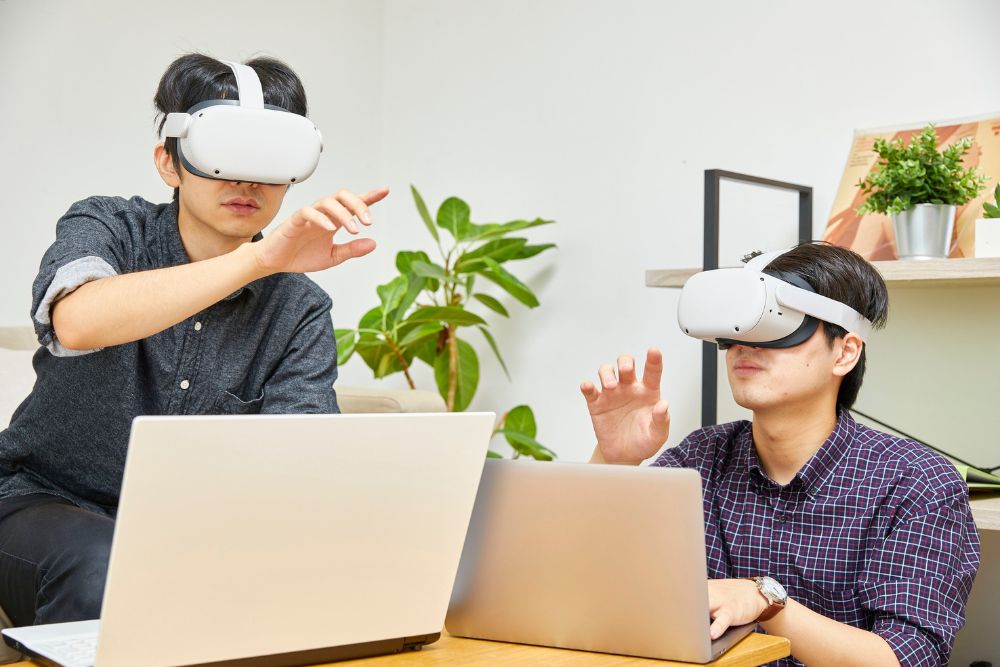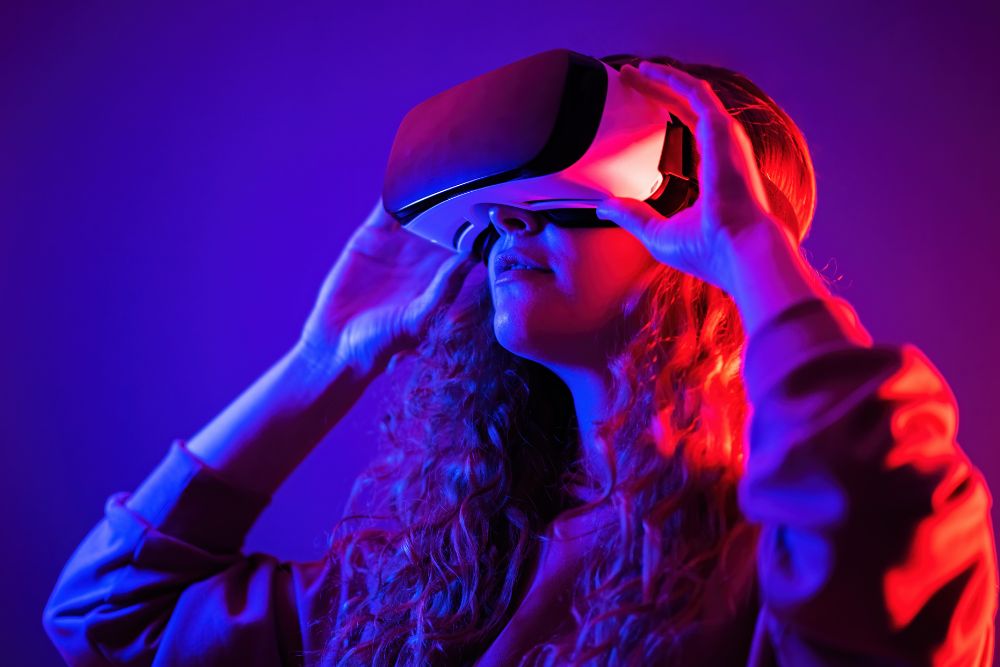The boundary between our online world and everyday reality is becoming more and more seamless. In India’s rapidly growing digital landscape, the leap from static webpages to immersive, interactive spaces is well underway—and at the heart of this evolution? Augmented Reality (AR) and Virtual Reality (VR). These technologies are changing how we shop, interact, learn, and do business online. For anyone serious about next-gen digital experiences, understanding AR VR Web Design is no longer optional.
Let’s dive into six powerful trends that are redefining how Indian websites, ecommerce stores, and mobile apps look and feel—each offering new ways to captivate users, increase online presence, and transform web design as we know it.
Top 6 Breakthrough AR VR Trends Shaping Web Design
1. Virtual Try-Ons Boosting Ecommerce Confidence

Online shoppers have always craved the ability to “try before they buy”—but AR is finally making this wish a reality. With AR-powered virtual try-ons, buyers can see how jewelry, glasses, makeup, and even clothes look on them without stepping into a store.
India in Focus:
Urban apparel brands and eyewear retailers are already adopting AR on their websites and apps. A Mumbai-based fashion startup recently introduced an AR fitting room that uses a phone’s camera to project outfits onto shoppers in real-time. This not only helps customers make choices faster but also leads to fewer returns—a win for both buyers and businesses.
Tip for Web Design:
Seamless AR experiences require well-optimized imagery, lightning-fast site speeds (think WordPress development), and a clean interface. By blending AR elements with standard ecommerce development practices, designers are changing how Indians shop online for good.
2. Immersive VR Showrooms and 3D Product Demos

Why settle for flat product images when your customers can ‘walk around’ a full showroom from their phone or laptop? VR spaces let people explore shops, apartment layouts, or car interiors—almost as if they’re physically present.
Indian Example:
A Delhi-based home decor brand recently stunned shoppers with a 360-degree VR walkthrough of their flagship store. Instead of scrolling through photos, visitors wandered digital aisles, zoomed in on carpets, and even rearranged furniture using drag-and-drop. The result was higher engagement, longer sessions, and more confident buying decisions.
App Development Angle:
More and more companies—from property developers to car manufacturers—are using VR features in their React Native apps, making these experiences richer and more immersive than ever before. Even smaller businesses can leverage off-the-shelf VR modules to give users memorable digital experiences, setting themselves apart in crowded markets.
3. Interactive AR Learning Modules for Websites

India is a hub for digital education, and AR is making online lessons livelier than ever. Imagine clicking on a website graphic and suddenly interacting with a 3D DNA strand or exploring a historical monument from all angles.
A Real-World Snapshot:
An EdTech site in Hyderabad embedded AR-powered biology models into their WordPress platform. Students pointed their cameras at textbooks and saw virtual hearts “beat” or volcanoes erupt in augmented space. This hands-on learning not only boosted curiosity but improved information retention—parents and students loved it.
Why This Matters for Web Designers:
If you work in WordPress development, Shopify eCommerce sites, or Laravel-powered platforms, adding AR learning modules makes content genuinely memorable. It’s not just about making a sale; —it’s about creating memorable, hands-on experiences that truly connect with and inform your audience.
4. Augmented Navigation and Live Assistance

Website users can get lost fast—especially when browsing extensive ecommerce catalogs or booking services. Enter AR-powered navigation, which helps users find their way visually. From real-time product highlighting to guided, step-by-step site tours, AR makes browsing intuitive and fun.
In the Indian Market:
A Bangalore electronics retailer’s AR chat assistant now points users to current deals or new arrivals using on-screen markers, right over the web interface. No more endless scrolling or searching—customers find what they want, faster.
Design Insight:
These features require polished UI work, optimized performance (Laravel backend helps!), and thoughtful placement to avoid overwhelming the user. The result? Effortless, guided digital journeys that keep users coming back.
5. VR for Remote Collaboration and Events

Remote work and online events are part of India’s new normal. VR is making it possible to host virtual meetings, expos, and product launches that feel genuinely interactive—no passport required.
Example from Practice:
A Kolkata IT consultancy recently held its annual kickoff in a custom VR “office space”—employees joined as avatars, mingled in digital lounges, and even celebrated wins with virtual high-fives. Not only did engagement soar, but remote employees felt more connected and valued.
For Web and App Devs:
Building these VR worlds takes a solid backend (Laravel is excellent for this), web layouts designed for virtual experiences, and the ability to connect everything smoothly with your existing systems and platforms. Smart businesses are embracing this to stand out in crowded industries and foster deeper team bonds.
6. AR-Driven Gamification and Campaigns

Gamification isn’t new, but AR is turning online contests, treasure hunts, and brand experiences into immersive adventures. By blending real-world inputs with digital rewards, brands are seeing huge upticks in engagement.
How It’s Happening Locally:
An FMCG brand in Pune recently launched an AR-enabled festival campaign: users scanned product QR codes with their phones to unlock mini-games and rewards that blended the user’s real surroundings with virtual graphics. The campaign went viral, with customers sharing their experiences across social media.
Takeaway for Designers:
For Indian brands and web professionals, AR-powered gamification opens a creative playground. Whether you’re building Shopify eCommerce sites, interactive landing pages, or React Native games, putting users at the center of the action grows loyalty and makes marketing memorable.
Final Thoughts: The Future of AR & VR Web Design
India’s booming digital economy is fueling fresh, immersive, and truly personal web experiences. As AR & VR move from “cool extras” to essential parts of web design, businesses across the board—be they in ecommerce, education, events, or services—can leverage these tools to stand out and succeed.
If you’re keen to experiment with AR VR Web Design, whether for an online store, educational portal, or new app, remember that great experiences are built on smart strategy, solid tech, and a deep understanding of local user needs.
Ready to blend imagination with innovation?
Write to us at contactus@panalinks.com—the Panalinks team is excited to help you explore the future of web design.

